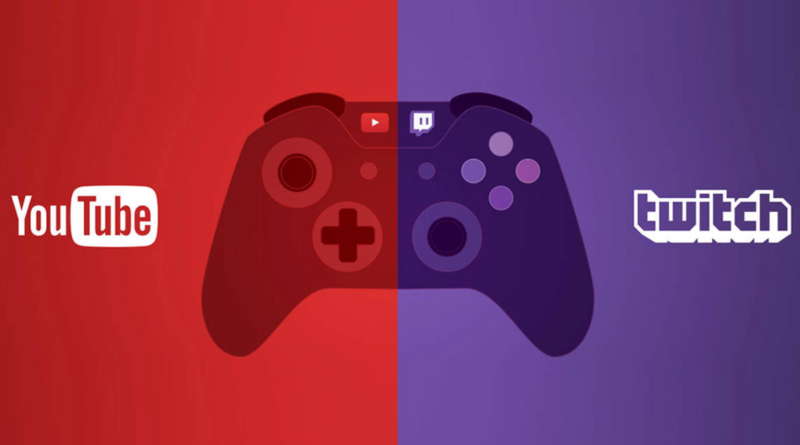This article may contain references to products or services from one or more of our advertisers or partners. We may receive compensation when you click on links to those products or services. Nonetheless, our opinions are our own.
The information presented in this article is accurate to the best of our knowledge at the time of publication. However, information is subject to change, and no guarantees are made about the continued accuracy or completeness of this content after its publication date.
Streaming services have significantly changed the gaming world, and I am sure this transformation is only gaining momentum. There is no longer a need to download gigabytes of data, install updates, or even buy powerful hardware— a stable internet connection is enough. Games are becoming more accessible, and developers are gaining new ways to monetize and interact with their audience. But how convenient and beneficial is it really? Let’s find out.
Game Accessibility and New Opportunities for Players

In the past, playing a new game required either purchasing a powerful computer or accepting the limitations of consoles. For many, this was a serious barrier—not everyone was willing to spend thousands on new hardware just to enjoy modern titles. Now, things have become much easier: streaming services like Xbox Cloud Gaming, NVIDIA GeForce Now, and PlayStation Plus Premium allow even the most demanding games to run on weaker devices, including laptops, tablets, and even smartphones.
This is especially important for esports, as now anyone can try their hand at popular disciplines without worrying about technical limitations. Cloud gaming makes it possible to quickly test new strategies, participate in ranked matches, and analyze professional games in a convenient format. For example, those interested in league of legends betting can study the game’s mechanics in greater depth, follow live broadcasts, analyze the actions of professional players, and immediately apply the observed tactics in matches. Even the lack of a powerful PC is no longer a barrier—streaming technology ensures smooth gameplay and minimal latency with a stable internet connection.
Another major advantage of cloud gaming is the ability to play any title without lengthy installations or downloading gigabytes of data. There’s no need to free up disk space or wait for patches—just launch the service, select a game, and dive right in. This is particularly convenient for those who don’t want to spend time on setup but simply want to relax and enjoy the gaming experience.
Impact on the Gaming Industry and Developers
The shift to cloud technologies has changed the very approach to game development and distribution. Previously, the primary model was the purchase of digital or physical copies, but now more and more companies are focusing on subscription services and streaming content distribution. This has radically altered not only player behavior but also the business models of developers.
The rise of monthly subscription services such as Xbox Game Pass, PlayStation Plus, and NVIDIA GeForce Now gives users access to an entire library of games, eliminating the need to buy each game individually. This makes gaming more accessible but also presents new challenges for developers. Now, it’s not enough just to release a game—they must keep players engaged in the long term. To achieve this, they need to actively work on updates, introduce new content, and adapt their projects for streaming.
Moreover, server stability has become a critically important aspect. Unlike traditional games that run locally on a device, cloud gaming is entirely dependent on the quality of the connection to data centers. Developers must optimize code, reduce latency, and consider potential technical limitations to ensure a smooth gameplay experience without lag or connection issues.
Another key factor is the financial model. Instead of relying on large one-time sales, companies now generate revenue through recurring subscription payments. While this stabilizes income, it also makes profit forecasting more complex, as much depends on player retention. Games that were once designed as one-time purchases must now be continuously updated and adapted to remain relevant within subscription services.
Overall, cloud technologies have opened up new opportunities for developers but have also introduced new challenges. Now, it’s not just about creating a good game—it must be optimized for streaming, stable in an online environment, and engaging enough for players to return to it again and again.
The Growth of Esports and Viewer Experience

Esports has greatly benefited from the rise of streaming platforms. Now, professional matches can be easily watched on Twitch, YouTube Gaming, and even within the games themselves, making tournaments more accessible to a wider audience. This has not only simplified viewing but also allowed fans to dive deeper into the competitive scene.
Streaming services have introduced interactive features: viewers can earn in-game rewards for watching, participate in polls, and switch between different in-game cameras. All of this enhances engagement and makes esports more dynamic.
Cloud gaming also helps players improve their skills—they can immediately test observed strategies by launching a game through services like GeForce Now. Additionally, smaller tournaments and local leagues are now easier to broadcast, giving young teams a chance to make a name for themselves. Esports is no longer just entertainment; it has become an integral part of the gaming industry, bringing players and viewers closer together.
Possible Problems and Limitations
Despite all its advantages, cloud gaming is not yet perfect. The biggest issue is its reliance on internet speed and stability. For a smooth experience, players need not only a high-speed connection but also minimal latency. In regions with unstable internet, this becomes a serious obstacle, especially for fast-paced games like shooters and fighting games, where even slight delays can affect the outcome.
Another major concern is the subscription model. Not all players are willing to pay a monthly fee for access to a game library, especially if they are unsure how often they will play. Unlike traditional purchases, where a game remains in the collection permanently, subscription-based titles can disappear from the catalog at any time, causing inconvenience for those who want to replay their favorite games or keep them readily available.
Additionally, there is the issue of ownership. In cloud gaming, players do not truly own the games—they merely rent access to them. This shifts the traditional approach to game design and monetization, pushing developers to create projects focused on continuous updates and player retention rather than delivering self-contained experiences. As the technology continues to evolve, these limitations remain the main barriers preventing the full adoption of cloud gaming services.
Conclusion
Streaming services have already transformed the gaming world, making games more accessible, esports more popular, and developers more flexible in their approaches to monetization and content distribution. However, the widespread adoption of cloud gaming is still hindered by technical limitations, such as dependence on a stable internet connection and issues related to content ownership. Perhaps, as technology advances, these problems will be resolved, allowing the industry to evolve further and unlock new opportunities for both players and developers.

Reviewed and edited by Albert Fang.
See a typo or want to suggest an edit/revision to the content? Use the contact us form to provide feedback.
At FangWallet, we value editorial integrity and open collaboration in curating quality content for readers to enjoy. Much appreciated for the assist.
Did you like our article and find it insightful? We encourage sharing the article link with family and friends to benefit as well - better yet, sharing on social media. Thank you for the support! 🍉
Article Title: How Are Streaming Services Changing the Gaming Industry?
https://fangwallet.com/2025/04/07/how-are-streaming-services-changing-the-gaming-industry/The FangWallet Promise
FangWallet is an editorially independent resource - founded on breaking down challenging financial concepts for anyone to understand since 2014. While we adhere to editorial integrity, note that this post may contain references to products from our partners.
The FangWallet promise is always to have your best interest in mind and be transparent and honest about the financial picture.
Become an Insider

Subscribe to get a free daily budget planner printable to help get your money on track!
Make passive money the right way. No spam.
Editorial Disclaimer: The editorial content on this page is not provided by any of the companies mentioned. The opinions expressed here are the author's alone.
The content of this website is for informational purposes only and does not represent investment advice, or an offer or solicitation to buy or sell any security, investment, or product. Investors are encouraged to do their own due diligence, and, if necessary, consult professional advising before making any investment decisions. Investing involves a high degree of risk, and financial losses may occur including the potential loss of principal.
Source Citation References:
+ Inspo
There are no additional citations or references to note for this article at this time.











































